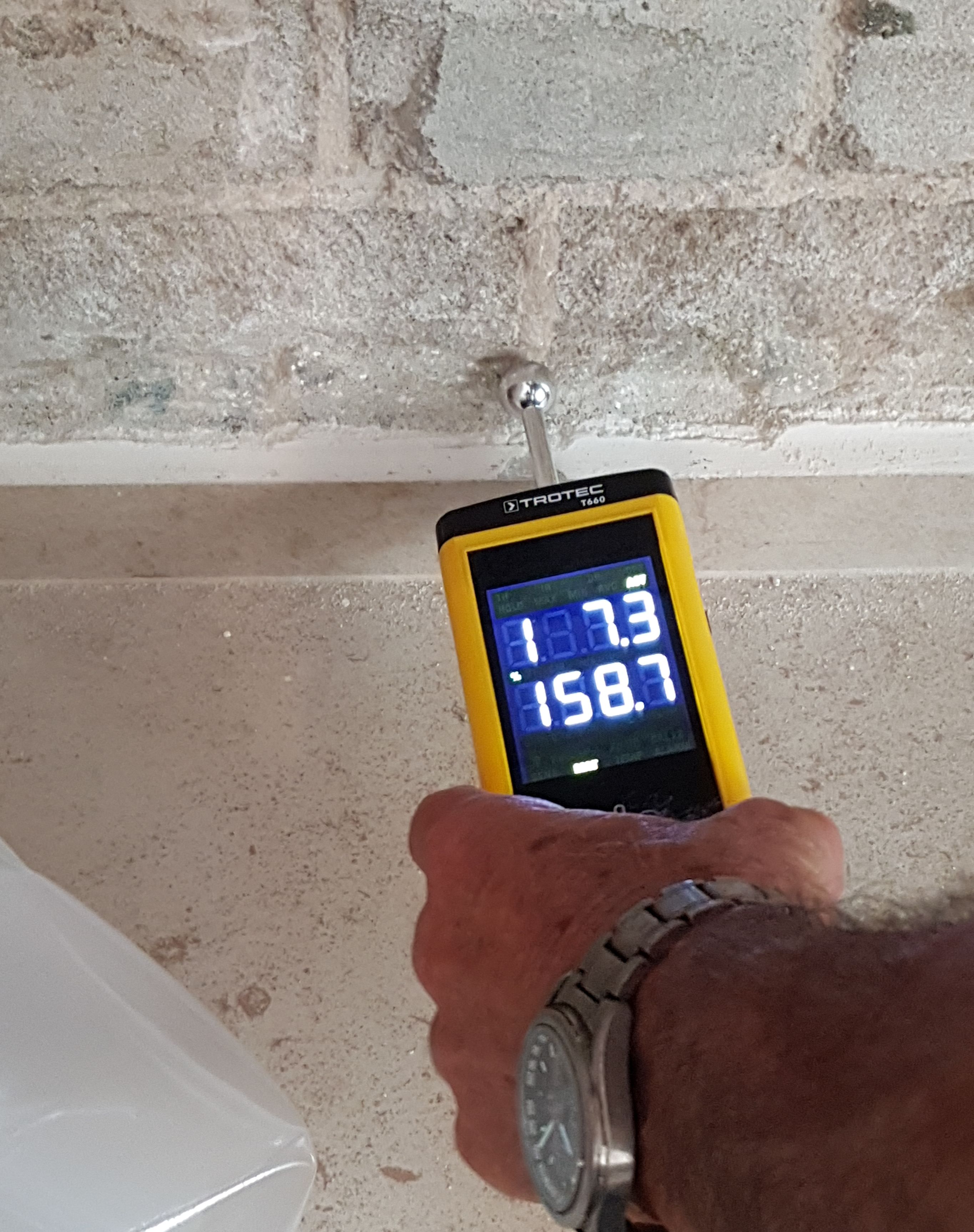Explore the Globe of Moisture Meters: Whatever You Required to Know
In the world of wetness meters lies a globe of accuracy and functionality that typically goes unnoticed. Comprehending exactly how moisture meters operate, the different kinds readily available, and their diverse usages can shed light on their importance in making sure top quality and efficiency.
Exactly How Moisture Meters Work
Moisture meters operate by gauging the electric conductivity or capacitance of materials to identify the dampness content present. These meters are important devices throughout numerous sectors, consisting of construction, farming, and woodworking. By using various methods such as pinless or pin-type innovation, moisture meters provide precise analyses that help experts make educated decisions.
Pin-type moisture meters work by inserting the sharp pins into the product being evaluated. On the other hand, pinless moisture meters use electro-magnetic signals to scan a larger area without causing any type of damages to the material's surface.
No matter of the approach made use of, moisture meters play a vital function in avoiding concerns such as mold growth, architectural damage, or product issues brought on by excess moisture. Recognizing just how these meters work is necessary for making sure the top quality and stability of products in different applications.
Kinds Of Moisture Meters
Offered the critical duty wetness meters play in different markets, it is important to understand the different kinds readily available to experts for properly analyzing moisture degrees - Moisture Meter. There are mostly two main kinds of dampness meters: pinless and pin-type dampness meters

On the various other hand, pinless wetness meters utilize electromagnetic sensing unit plates to check a bigger location of the material without triggering any type of damage. This type is suitable for swiftly scanning big locations and is typically made use of for flooring, walls, and ceilings. Pinless meters are convenient for taking analyses on finished surface areas without leaving any visible marks.
Both types of wetness meters have their advantages and are picked based upon the specific needs of the task available. Understanding the differences between these types is critical for experts to make exact wetness evaluations.
Applications Throughout Industries
Building experts depend on moisture meters to analyze the dampness degrees in building materials like concrete, timber, and drywall, which is crucial for preserving architectural stability and preventing issues like rot or mold and mildew. The flooring market utilizes dampness meters to measure the wetness content in subfloors prior to installing various floor treatments, stopping pricey problems due to excess dampness. In the food market, dampness meters are used to keep an eye on and regulate moisture levels in items such as grains, nuts, and dried out fruits to preserve freshness and top quality.
Tips for Utilizing Wetness Meters
Make use of the wetness meter's calibration settings to ensure exact analyses when measuring the dampness web content in various products. In addition, make sure the meter is established to the appropriate moisture variety for the product you are gauging to obtain the most specific results.
When using a pin-type moisture meter, insert the pins to the appropriate deepness suggested for the material being examined. This ensures that the dampness readings are extracted from the appropriate deepness within the product, giving an extra exact representation of its dampness content. For pinless wetness meters, keep in mind to keep proper call with the material's surface to get reputable analyses.
Frequently examine and change the batteries in your dampness meter top article to stop incorrect readings as a result of low power. Store the meter in a safe and completely dry place when not in use to prolong its lifespan and keep its precision. By adhering to these ideas, you can make the most of the performance of your wetness meter and acquire exact dampness web content measurements throughout different materials.
Upkeep and Calibration
To make sure the accuracy of moisture content dimensions, routine maintenance and see this website calibration of the moisture meter are important actions in its proper functioning. Maintenance involves keeping the moisture meter clean and complimentary from particles that could influence its analyses. It is necessary to adhere to the manufacturer's standards for cleaning up to avoid damages to the tool. Additionally, normal calibration is essential to validate the precision of the analyses. Calibration changes the moisture meter to guarantee that it supplies reliable and regular outcomes.
Calibration must i thought about this be performed occasionally, especially if the wetness meter is utilized often or in important applications where exact measurements are required. By keeping and adjusting the moisture meter frequently, users can trust the accuracy of the wetness web content measurements acquired.
Verdict

To conclude, wetness meters play a critical function in various sectors by properly determining the moisture material of products. Understanding exactly how these devices work, the different kinds available, and proper upkeep and calibration are crucial for obtaining trustworthy outcomes. Whether in agriculture, building, or manufacturing, the usage of dampness meters helps guarantee quality assurance and efficiency in procedures.

In final thought, wetness meters play an essential duty in various sectors by precisely measuring the dampness web content of materials.
 Dylan and Cole Sprouse Then & Now!
Dylan and Cole Sprouse Then & Now! Mason Gamble Then & Now!
Mason Gamble Then & Now! Michael Oliver Then & Now!
Michael Oliver Then & Now! Brandy Then & Now!
Brandy Then & Now! Christina Ricci Then & Now!
Christina Ricci Then & Now!